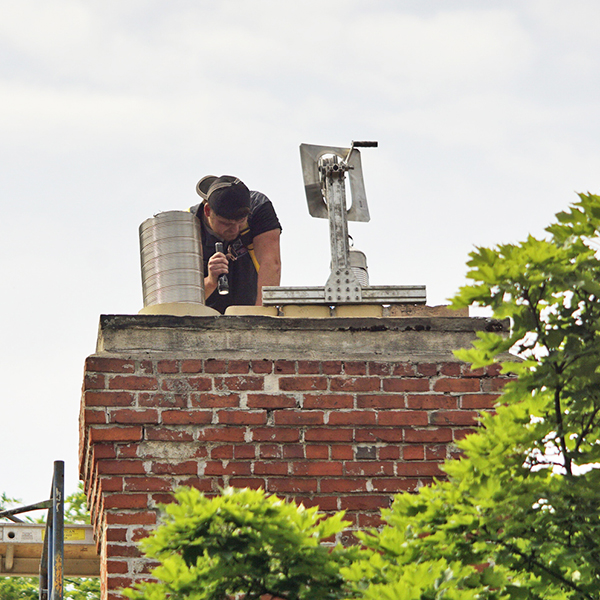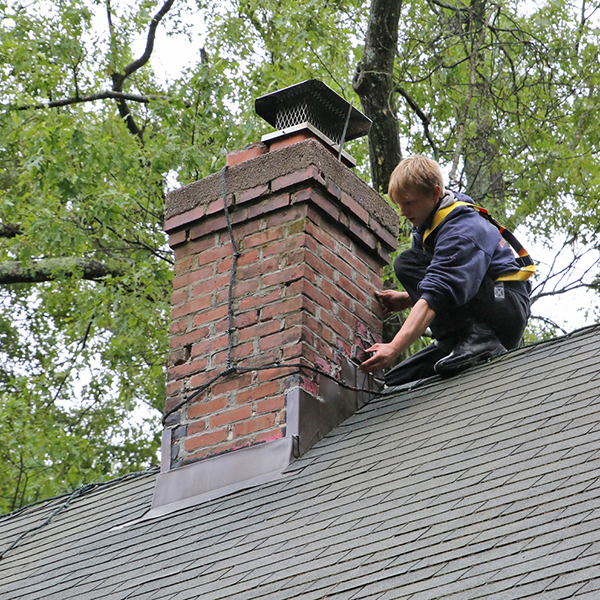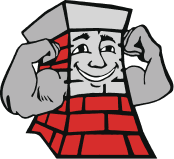What Technicians Check for During a Chimney Inspection
An annual chimney inspection is the best way to keep your chimney and fireplace running safely and at peak efficiency all winter long. When performed by a CSIA-certified technician, a chimney inspection covers many areas from the masonry structure to performance issues. Here are some of the key areas of focus during a yearly chimney inspection.
 Creosote
Creosote
If you use a wood-burning fireplace, creosote is added to your chimney flue every time you burn a fire. Creosote can form as a solid, sticky or puffy substance, all of which are highly flammable. Excess creosote is the cause of most chimney fires in the U.S. each year. Chimney inspectors always check the flue to determine how much creosote has built up since the last chimney sweep service.
Aside from the danger of a chimney fire, creosote and soot can exist in large enough quantities to cause smoke and toxins to draft poorly, putting everyone who lives in your home at risk of smoke and carbon monoxide inhalation.
Different types of flue obstructions
Along with excess creosote, chimney flues can be narrowed by all sorts of obstructions such as the nests of birds, squirrels and other small animals; the animals themselves when they are unable to get out of the chimney after getting in; and tree debris like leaves, twigs, fruit, seeds and more.
These obstructions prevent the natural draft of your fires and can send smoke into the home. Smoke is bad enough, but the carbon monoxide carried within smoke is known to be fatal to humans and animals. This toxic gas is invisible and odorless, so poisoning can happen without anyone realizing it until symptoms begin to develop.
When a chimney inspection turns up excess creosote or other obstructions in the flue, immediate chimney cleaning is recommended. Most chimney inspectors are also certified chimney sweeps and can do this work themselves.
 Masonry damage
Masonry damage
Another key component of a chimney inspection is checking the masonry for signs of cracking, water damage and general decay. Whenever bricks and mortar are compromised, rain and snow can infiltrate the cracks and expand during freezing weather. This causes further damage and can actually lead to a chimney collapse. Addressing damaged chimney masonry can be as simple as applying a waterproof sealant to prevent water from getting in.
In cases where damage is more extensive, a process known as tuckpointing can be used to add fresh new mortar to areas where old mortar is missing. Various levels of chimney rebuilding may be necessary when damage is significant. Your chimney inspector will tell you exactly what is needed to restore structural safety to your chimney.
Chimney leaks
One of the most common problems homeowners report with their chimneys is a leak. Chimney leaks can be the result of cracking and decay within the masonry or problems with the chimney crown, chimney cap, flashing and other components.
Chimney inspectors will find out where the leak is coming from and encourage you to have the problem repaired before widespread damage occurs – which it will if the leak is ignored.
Chimney component inspection
A certified chimney inspection may also involve a close look at your chimney’s components including:
- Throat damper
- Top-sealing damper
- Smoke chambers/smoke shelf
- Chimney liner
- Full-width chimney cap
- Flue cover
- Chimney chase top
- Chimney crown
Schedule a professional chimney inspection
Northeastern Chimney of West Hartford, CT, specializes in chimney inspections that cover all the areas and functions that make your chimney and fireplace safe and operational. Our technicians are certified through the Chimney Safety Institute of America (CSIA) and can perform all levels of chimney cleaning and chimney repair services. Call us today at (860) 233-5770.


